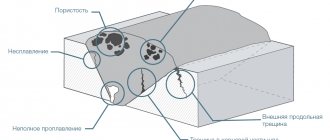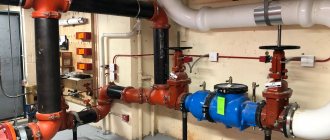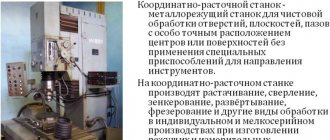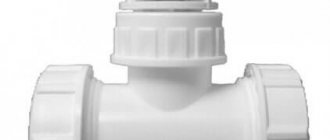Pneumatic mail is currently an indispensable element of work in many industries that are somehow related to transportation. Now the pneumatic mail method is actively used in banks, warehouses, high-rise buildings, government agencies and similar places. In general, such installations can be seen in places where warehouses or departments are located on different floors, or even divided into several buildings.
Navigation:
- How does pneumatic mail work:
- Pneumatic mail systems
- Capsules for pneumatic mail
- Blowers for pneumatic mail
In fact, a pneumatic post is a whole network of pipes, which together create a certain system that makes almost any part of the structure absolutely accessible, no matter where it is located. If desired, you can also lay main pipes between several buildings. This is done both by air and underground, depending on how much money the company is willing to spend on it.
The pneumatic mail system allows you to significantly improve the distribution of labor, which subsequently leads to an increase in the level of productivity and an increase in the level of benefit when managing a bunch of documents, money or securities. Most often, pneumatic mail is found in those organizations in which the flow of original documents is at the highest possible level.
Now we will look at all the key phases when sending by pneumatic mail:
- Initial loading of the capsule into the station, which will go straight to the recipient
- The beginning of the movement of the capsule from the beginning, straight to the compressor, which will redirect it to the next compartment
- The movement of the capsule from the main compressor, straight to the recipient station where the message was addressed
- Receiving the capsule at the final point and removing it from the pneumatic mail system
In order to send a capsule, the user must first enter the exact address of the station where the recipient can retrieve this capsule. After the address has been indicated, all that remains is to insert the capsule into the entrance hole of the station. The next stage is the path of the capsule from the initial station straight to the compressor, where the process of directing the further route towards the recipient takes place.
After all the arrows have taken the required positions, the system controller gives the compressor permission to continue the capsule’s path. As for the passage of the capsule through the key arrows, this process is constantly under the supervision of optical sensors, which immediately respond to any problems in the system. After the capsule has passed the last arrow on its path, it automatically stops at the place where the second user must carefully remove it and send it in the opposite direction.
It is worth noting that the movement of various mechanisms and the path of the capsule using route arrows are processes that are under the full control of sensors, which in turn exclude the possibility of clamping the capsule in one of the compartments of the system.
If, within a certain period of time, the capsule does not arrive at the recipient’s station, then all other stations are instantly blocked, and subsequent transfer of capsules becomes impossible. Next, the system goes into a diagnostic process, which, using detailed analysis, tries to find the location of the breakdown and quickly purge the entire system.
Purge is a process in which the compressor sucks air from all stations, as a result of which all capsules that are stuck halfway are immediately returned back to the controller. After the system produces suction, all found capsules are sent straight to the dump station. Next, the controller prepares the system for further safe use, after which the process is repeated in exactly the same way.
How does pneumatic mail work:
Pneumatic mail is a process that consists of elements such as:
- Compressor
- Central controller
- Compressor control unit
- Stabilized system power supply
- Main pipeline
- Working route arrows for moving through stations
- Remote control
The main elements of pneumatic mail equipment are often installed directly behind the suspended ceiling, since this is where the controller and all the stations through which all the capsules will move in the future can be reliably and easily placed.
The double-acting compressor, at this time, creates pressure and, accordingly, vacuum inside the system, on which the direction of movement of the capsule itself will depend. A significant role in such a system is played by the bikepass system, which is responsible for the rapid and reliable braking of the capsule that has arrived at the desired point.
The key element for managing all capsule transfer processes is the central controller. Since it contains a certain amount of memory and high-quality software. It is more than enough to carry out high-quality control of all processes that are in some way connected with the movement of capsules within the system.
As for automatic route switches, they are the ones who are engaged in establishing connections between certain sections of the main water supply system, drawing an analogy in terms of movement and constructing the fastest route.
Pneumatic mail systems
Already now on the market you can find a huge number of types of pneumatic mail systems, each of which will provide you with certain design features that should definitely be taken into account.
Previously, we already talked about the types of pneumatic mail systems, but did not mention the advantages of using such systems, which is what we will now actually do.
Advantages of the pneumatic mail system:
- Effective use of working time, which is becoming significantly larger
- Possibility of subsequent modernization of the system, which may also receive new privileges
- High level of reliability of such equipment
- The ability to send personalized capsules, and do it quite quickly
- Possibility of temporary forwarding if the recipient is not there at the time of arrival
- Application of modern technologies in the design of this system
- The possibility of laying such a system between several buildings. This will allow for fast and high-quality transfer of capsules from one facility to another
- Speed of transfer of documents, money, tests and the like that require urgent delivery to another point
⇡#History
Pneumatic mail is a curious type of system for moving both mail and small cargo under the influence of compressed or rarefied air. Through special pipelines located underground, special passive containers (capsules) are transported from one point to another at a decent speed. The name of the post office is transparent: it comes from the Greek word “pneumatikos” - “air”.
By the way, the Greek “roots” of pneumatic mail are very real. After all, the ancient Greeks were the first to learn how to use compressed air. Thus, the ancient Greek physicist-inventor Ctesibius of Alexandria (approximately 285-222 BC) designed a hydraulis (hydraulic organ), a vacuum pump and a catapult that threw spears using compressed air. Ctesibius outlined his thoughts in a number of scientific works, including the work “On Pneumatics,” which, however, has not survived to this day.
The ancient Greek engineer Heron of Alexandria, who lived in the 1st century BC, had a great influence on the development of pneumatic transport. The fundamentals of pneumatics were described by him in the famous treatise “Pneumatics”.
Denis Papin
With the fall of ancient culture and the spread of Christianity in Europe, the so-called “dark times” began, therefore they started talking about pneumatic mail as a means of exchanging postal messages only in the 17th century. More specifically, the French physicist Denis Papin proposed this type of communication in 1667. Using a small difference in pressure in the pipe, Papin found out that an object placed in a pipe experiences a force that can give the object some speed. Thus, the theoretical possibility of transporting small objects under the influence of compressed air was convincingly justified.
However, the creation of pneumatic mail was still far away. It was not until 1792 that compressed air was first used to transport written messages through a pipe. This system was located in the fifty-meter bell tower of Vienna's St. Stephen's Cathedral. It was connected to a gatehouse, where a written message was sent through a pipeline in a special metal cartridge about a fire in the city noticed from the bell tower. In this form, the design functioned until 1855 and represented the first type of pneumatic mail (“internal”), when the system is located in one building. Another type (“external”) - pneumatic mail connecting various areas or buildings of the city - was implemented later: in 1854 in London.
Josiah Latimer Clark
The credit for creating the first city pneumatic mail belongs to Josiah Latimer Clark, who patented a method “for transmitting letters or parcels between places by means of air pressure and vacuum.” Clarke's system consisted of 1.5-inch diameter pipes laid between the London Stock Exchange and the Central Telegraph Office (about 200 m). Cylinders with letters, parcels and small parcels moved along them at a speed of about 6 meters per second.
In fairness, it is worth mentioning the creator of the postage stamp, Rowland Hill, who modeled a system of underground pneumatic pipes to speed up the sending of letters.
In the summer of 1861, the London Pneumatic Despatch Company, founded two years earlier, conducted a demonstration of a pneumatic transport road in Battersea. The 30-inch diameter pipes have successfully transported cargo weighing up to three tons and even several passengers placed lying down in a four-wheeled trolley.
Battersea pneumatic transport road trial
A permanent line with the said "trolleys" began operating between Euston railway station and the North West Post Office on Eversholt Street from the winter of 1863. One vehicle could hold up to 35 bags of mail. The travel time between terminals was about a minute. The first arrival of the mail trolley became a national event and was covered in the London News on February 18, 1863.
The Pneumatic Despatch Company's postal pneumatic system was unique in many ways and, except for a couple of other places, was not built anywhere else. In 1874 it ceased to be used. Even moving the head in person did not help - a clear demonstration of the safety of this method of transportation. Two vehicles were restored in 1930 and are now kept in museums in London and York.
"Pneumatic machine" on a well-deserved rest
But the effectiveness of the London pneumatic mail in its “classic” form, which took over part of the traffic of telegraph lines, was appreciated all over the world - similar systems were created in Berlin (1865), Paris (1866), Vienna (1878) ), Prague (1887), Philadelphia (1892), New York (1897), Rio de Janeiro...
If in London the transport pipes were located in a star shape, which is why various receiving stations communicated directly only with the central one, then in a number of European cities (for example, Paris, Berlin and Vienna) the arrangement of pipes was circular, so individual stations could “contact” with each other.
By the way, in Berlin in 1884, the circular-type postal pneumatic network was transformed into a star-shaped one. The rapid development of German pneumatic mail (in German - “Rohrpost”) in the second half of the 19th century is associated with the activities of the Postmaster General of the German Empire, Heinrich von Stephan, the founder of the Universal Postal Union.
By 1900, in Berlin, as well as in the suburbs of Schöneberg, Rixdorf and Charlottenburg, the total length of pneumatic postal pipes was almost 120 km. The network united 53 stations. The pipes used were cast iron, they had an internal diameter of 6.5 cm and were buried at a depth of 1.25 m. The length of the aluminum capsules sent was 15 cm.
Diagram of the Berlin postal pneumatic network (1928)
In 1913, more than 12 million pieces of mail were delivered using German pneumatic mail.
In 1916, the Union Postale magazine published statistics on pneumatic mail throughout the world. It turned out that the length of the pipes was approximately 1000 km, of which more than 400 km “belonged” to the French pneumatic mail. Data from 1934 confirmed the primacy of the Gauls - the Parisian pneumatic mail network with a length of 437 km was the longest in the world.
The Russian Empire also did not remain aloof from progress - pneumatic mail was installed at certain post offices in St. Petersburg and Moscow to speed up the movement of correspondence. In the pre-revolutionary Russian Empire, the term “air mail” was used to designate pneumatic mail, which currently has a different meaning.
The three-seater DB-2B Rodina aircraft was equipped with pneumatic mail
There was pneumatic mail in large cities of the Soviet Union. Moreover, it was even installed in airplanes, for example, in the ANT-20 “Maxim Gorky” and DB-2B, “Rodina” (on the latter, on September 24-25, 1938, the women's world record for the distance of a non-stop flight in a straight line was set).
In the USSR, pneumatic mail acquired great importance on the railways. One of the first such systems was put into operation in 1959 at the Leningrad-Sortirovochny-Moskovsky station.
The popularity of pneumatic mail was so great that postage stamps were issued to pay for its services in different countries of the world. Special envelopes and postcards were also widely printed. In addition, marks were made with special stamps and labels [8].
Italian stamp for pneumatic mail
Capsules for pneumatic mail
The operation of the pneumatic mail directly depends on how effectively the capsules perform. That is why, in such systems, they most often prefer to use only those capsules that are created according to the maximum quality criteria and can demonstrate their capabilities in a wide variety of conditions.
At the moment, the market is overflowing with a variety of vacuum capsules with very high performance indicators. Among all these options, you can choose something worthwhile for any system, no matter how complex it may be.
Now we will look at several optimal models of capsules for pneumatic mail:
- Swivel LID CARRIER NW110
- FLIP-TOP CARRIER NW110K/L
- SWIVEL LID NW3 inch
These are three quite good options, which, despite the average amount, can please the user with decent characteristics and a wide range of applications.
Blowers for pneumatic mail
Blowers are equipment that is used in a wide variety of installations and plays a key role in the process of creating high or ultra-high vacuum. The exact same function of a blower is performed in a pneumatic mail system, which also requires blowers that are capable of producing the required level of pressure to create a high vacuum. Since vacuum is simply necessary for transporting capsules, and without it such a system simply would not be able to function.
There are a large number of types of vacuum leaf blowers on the market now, and they all have certain performance characteristics. If we talk about the pneumatic mail system, then only the highest quality and reliable blowers are used, which can ensure the creation of a constantly high and reliable vacuum.
Pneumatic mail and philately
Why and how 5g will change everything: technologies, phased implementation and element base for subscriber equipment
To pay for pneumatic mail services, special postage stamps were issued in Italy, and in France, Germany, Austria, Czechoslovakia, Argentina, Algeria and other countries - a variety of solid items (envelopes, postcards, secret cards). In the practice of pneumatic mail, corresponding stamps, labels, etc. were also widely used. All of them are the subject of collecting and philatelic study.
| Pneumatic mail sticker (Germany, Berlin and Munich) | Pneumatic mail letter with printed 30-pfennig "Germany" stamp of the 1902 model (Berlin, 1902) | US Postal Card Pneumatic Posted in Chicago () |










